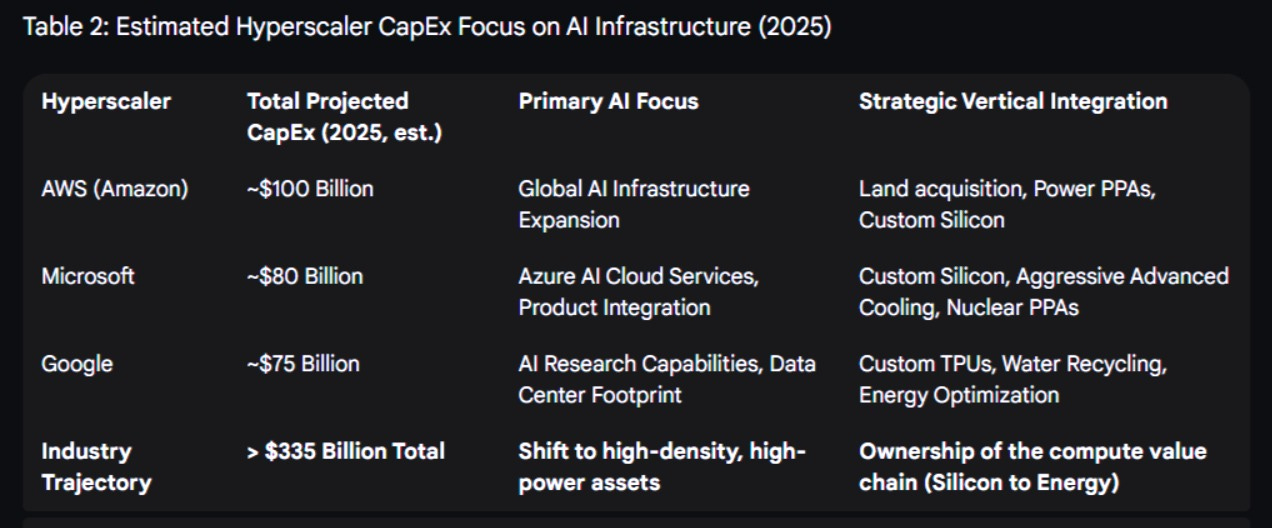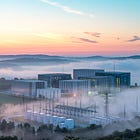Who’s Powering the Cloud’s Next Expansion (And Why Nations Are Competing to Join Them)
The AI boom is igniting a global scramble for power, land, and infrastructure and only a few can keep up.
Welcome to Global Data Center Hub. Join investors, operators, and innovators reading to stay ahead of the latest trends in the data center sector in developed and emerging markets globally.
This article is the 10th article in the series: From Servers to Sovereign AI: A Free 18-Lesson Guide to Mastering the Data Center Industry
The cloud used to be invisible.
Now it’s physical again with concrete, copper, and cooling towers rising on every continent.
Everywhere, governments and corporations are racing to plug into the same scarce resource: power.
This is the real story behind the AI revolution. It’s not just about chips or algorithms. It’s about who can energize the cloud fast enough to fuel the future.
The Cloud Is Expanding Faster Than the Grid Can Handle
AI has turned cloud growth into an industrial phenomenon.
Each new model, training run, or application demands compute capacity on a scale the grid was never designed for.
Hyperscalers (Amazon, Microsoft, Google, Meta) are now deploying hundreds of megawatts a quarter.
Their expansion is so rapid that utilities can’t keep up, regulators are scrambling to respond, and entire energy markets are being reshaped around AI load curves.
The world isn’t short on innovation, it’s short on electrons.
Why Power Is Becoming the Ultimate Competitive Advantage
In the race to scale AI, power access has replaced capital as the ultimate bottleneck.
A company with GPUs but no megawatts is like a refinery without oil.
That’s why hyperscalers now negotiate directly with utilities, build on-site substations, and invest in renewables at unprecedented scale.
Their data centers have become energy infrastructure as much as digital infrastructure, power plants for intelligence.
Every watt secured is a strategic weapon. And the battle is global.
The New Geography of Compute
The cloud’s next expansion isn’t happening in Silicon Valley, it’s happening where power and policy align.
Northern Virginia still leads, but the map is shifting.
Malaysia and Indonesia are courting hyperscale campuses.
Saudi Arabia is offering renewable-backed AI zones.
India is rolling out incentives for sovereign data centers.
Even Latin America and Africa are seeing a surge of investment as operators seek fresh megawatts and political stability.
The next generation of digital superpowers will be defined not by population or GDP, but by how much compute they can host.
Governments Rediscover the Art of Industrial Strategy
For decades, infrastructure was a private-sector game.
Not anymore.
Governments are realizing that compute is a national resource and they want control.
The EU is funding “trusted clouds” under its sovereignty agenda.
The U.S. CHIPS Act is reshoring compute manufacturing and fabrication.
Saudi Arabia’s Vision 2030 integrates AI data centers directly into national energy planning.
Every major economy is now treating digital infrastructure as a matter of sovereignty and security, not just commerce.
The cloud has become statecraft.
How Hyperscalers Became Energy Companies
The biggest tech firms now operate more like utilities than platforms.
They are signing power purchase agreements measured in gigawatts, building solar farms, and even exploring small modular reactors to feed their campuses.
For these firms, power is the new platform. Control it, and you control everything that runs on top of it.
This transformation has turned hyperscalers into the largest private investors in clean energy in history, outpacing governments themselves.
They’re not waiting for permission; they’re building the future grid one campus at a time.
The Rise of “Compute Diplomacy”
A quiet form of diplomacy is emerging based not on ideology but infrastructure.
Nations are negotiating data-center deals the way they once negotiated oil concessions.
Compute corridors are forming between allies: U.S.–Saudi partnerships, EU–Japan data accords, and India–Singapore connectivity pacts.
These alliances are redrawing trade routes and aligning national interests around data flows and electricity.
It’s geopolitics built on fiber and megawatts, the new Silk Road of the AI age.
The Investment Boom Behind the Expansion
Follow the money, and it leads to infrastructure.
Institutional investors (sovereign and pension funds, private equity) are pouring capital into the data center sector.
They see what’s coming: a trillion-dollar wave of AI-related infrastructure spending over the next decade.
Power contracts, land banks, and substation rights are becoming coveted assets in global finance.
Some see this as a speculative bubble while other see it as an industrial migration.
The same capital that built the highways and oil refineries of the 20th century is rebuilding the digital grid of the 21st.
The Physical Limits of the Digital Future
But the expansion has limits.
The world’s transmission networks are old, permitting cycles are slow, and skilled labor is scarce.
Even the richest companies can’t escape the laws of physics or politics.
The next great constraint won’t be AI innovation. It will be infrastructure readiness.
How fast each nation can deliver power, cooling, and fiber to the edge of the network.
In this sense, the future belongs not to those who invent the best models, but to those who can build the best foundations.
The Real Takeaway: Power Is the New Platform
The AI boom has revealed a new hierarchy of power, literally.
Energy access defines compute access. Compute access defines intelligence. And intelligence defines economic and national strength.
Every data center, every grid connection, every transformer is a lever in the balance of global competition.
The world’s next superpowers won’t just write code, they’ll generate the electricity that makes it possible.
The race to build the future of AI is, at its core, the race to power it.
And that’s why nations everywhere are competing to join.





It's wild to watch Ai grow and the systems and power that need to be in place. Will be fun to watch it unfold.